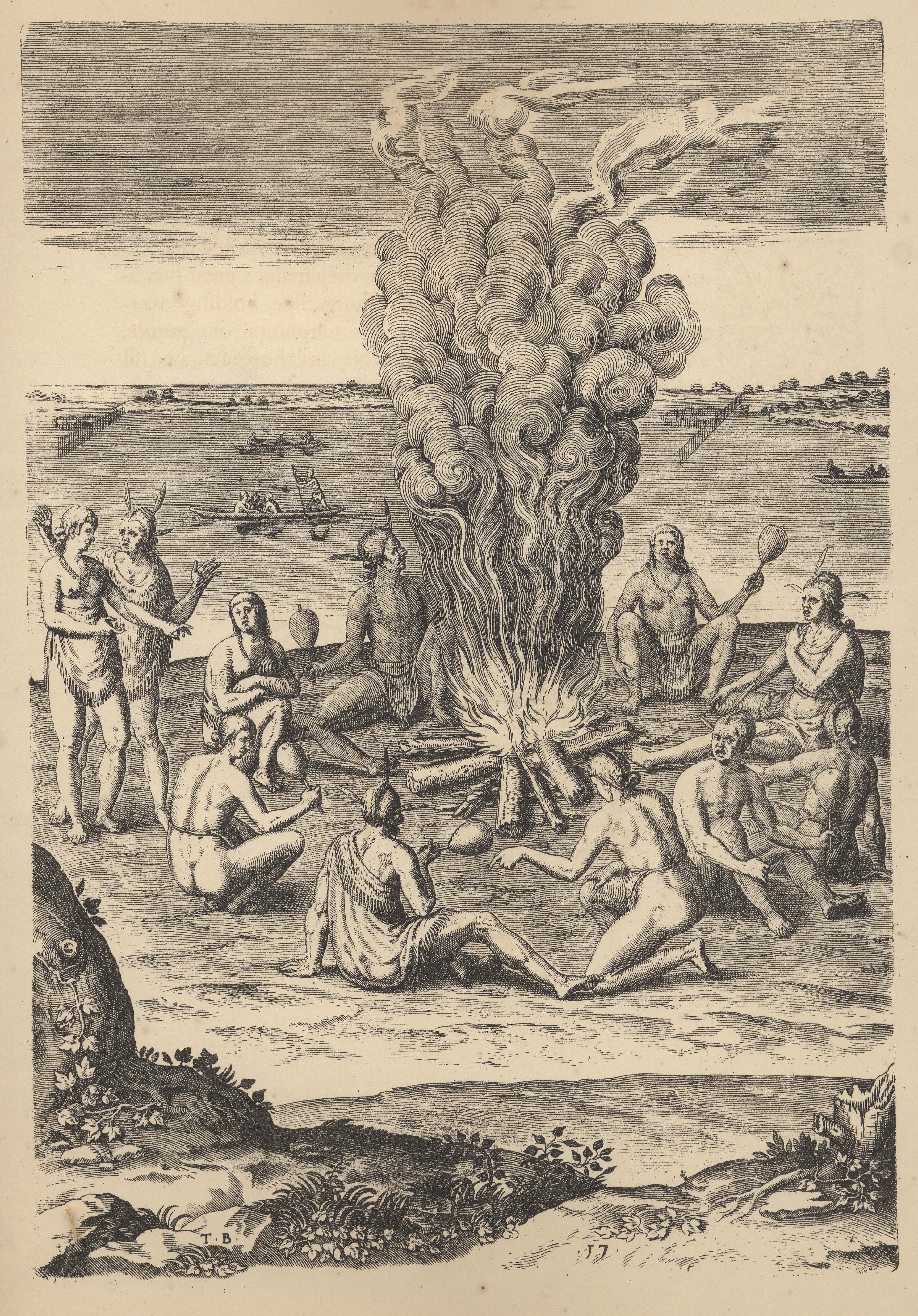"But what of those more intangible aspects of the New World—the inscrutability of Native American religious practices, for instance, or the uncertain future of the Virginia colony as an object for investment? What of this deferred content that eluded the engraver's net of rationality, that could not be captured by an outline and set into measurable space, that could not, in short, be made to signify within the rules of the perspective system? I do not raise these questions to ask where in the engraving we might locate these unknowns. I have already suggested that the formlessness of de Bry's smoke provides a space, for such projections and thus for the constitution of the viewer's own subjectivity. I ask these questions, rather, in order to begin considering the structural role that de Bry's smoke might play vis-a-vis the perspective system, for the kinds of ambiguous readings this smoke provokes—readings grounded in uncertainty, doubt, speculation-arc: precisely the kinds of meaning perspective will not admit. The formlessness of smoke serves as a negation of the perspective system: smoke is not any particular meaning but instead signifies all that cannot be contained by contours and orthogonals. By approaching de Bry's smoke in this way we can begin to grasp its semiotic function as the indefinable remainder of the perspective system (a function that must be understood as being prior to any attempt to read smoke). Smoke is the exception that defines the rule, the excluded term that makes it possible for perspective to cohere as a system."
—Michael Gaudio, Engraving the Savage

